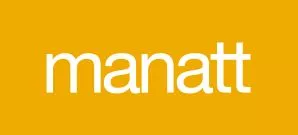The Federal Trade Commission (FTC or Commission) issued the much anticipated final revisions to its Guides Concerning the Use of Endorsements and Testimonials in Advertising (the Endorsement Guides) just before the July 4th weekend. The industry already had a glimpse of these revisions when the FTC issued its proposed updates in May 2022, but after its review of the public comments submitted in response to the proposed updates, the Commission further refined the text and examples in issuing the final revised Endorsement Guides and also provided more specific guidance in an updated version of its accompanying document to the Endorsement Guides, FTC's Endorsement Guides: What People Are Asking (FAQs).
This article is Part 2 of our two-part series analyzing the revised Endorsement Guides and the updated FAQs, primarily as compared to the proposed updates in May 2022. See Part 1 for a discussion on consumer reviews, fake reviews and fake users and an expanded definition of "endorsement."
Clear and Conspicuous Definition
The FTC adopted its previously proposed definition of "clear and conspicuous" in Section 255.0(f) of the Endorsement Guides. The phrase "clear and conspicuous" is generally used in the Endorsement Guides in connection with the requirement to disclose any material connection between the endorser and the seller of the endorsed product (commonly referred to as a "material connection disclosure"). The new "clear and conspicuous" definition includes the following key concepts:
- A "clear and conspicuous" disclosure is "difficult to miss (i.e., easily noticeable) and easily understandable by ordinary consumers." If an endorsement targets a particular audience, such as older adults, then "ordinary consumers" include such targeted audience.
- If an endorsement is made visually, then the disclosure should be visual; if an endorsement is made audibly, then the disclosure should be audible; if the endorsement is made both visually and audibly, then the disclosure should be visual and audible.
- If the endorsement is made on an "interactive electronic medium, such as social media or the Internet, the disclosure should be unavoidable."
- The disclosure should not be inconsistent with anything in the endorsement.
These concepts are not entirely new and follow the Commission's position on disclosures generally, but the final revisions to the Endorsement Guides and the updated FAQs provide more specific guidance on how disclosures should be made and delineate the FTC's views on effective disclosures. For example, the updated FAQs provide the following guidance:
- "Ad," "Paid ad," or "#ad" are still acceptable for paid posts as well as receipt of a free product.
- "#endorsement" is not clear enough.
- "#ambassador," "#client," "#consultant," "#advisor" and "#partner" are all problematic because they are ambiguous and confusing, but adding the brand name (e.g., "#XYZ_Partner" or "#XYZ_Client") might be clear enough.
- "Sponsored" and "Promotion" at the beginning might be fine, but "Sponsored by XYZ" or "Promotion by XYZ" would be clearer.
- Disclosures in TikTok videos should be superimposed over the videos instead of in the text description.
- Disclosures in the comments to Facebook posts are not clear and conspicuous.
- "#freeproduct" or "I received free tickets" is not clear as a free product disclosure because it does not identify who gave the endorser the product; but, stating that "I was given a free [name of product] to review" would be clearer.
- "#comped" or "#hosted" for nonpaid endorsements of events is not clear enough without also including the brand that provided the free tickets/invitation and a description of what the brand provided for free.
Notably, contrary to the general industry practice on social media sweepstakes disclosures, the Commission stated in the updated FAQs that "#sweepstakes" alone is not a sufficiently clear disclosure to indicate a post that is incentivized by a sweepstakes. For the disclosure to be clearer, the FTC recommended that the name of the brand or product be included in the disclosure also (e.g., "#XYZ_sweepstakes"). Previously, the FTC had only disfavored abbreviations like "#sweeps."
Disclosures of a Material Connection
The FTC made several clarifications in the Endorsement Guides and the updated FAQs on the circumstances under which a material connection disclosure should be made as well as the scope of the disclosure. Acknowledging that not all connections are material enough to warrant a disclosure because some connections are "too insignificant to affect the weight or credibility given to endorsements," the FTC established a new standard for determining whether a disclosure is necessary based on the concept of "significant minority." Section 255.5(a) of the Endorsement Guides now states that a disclosure is required when "a significant minority of the audience for an endorsement does not understand or expect the connection" (emphasis added). While the term "significant minority" was referenced in the prior version of the FAQs, the FTC had not used that as a standard to differentiate between a connection that requires a disclosure and a connection that does not.
The determination of what a "significant minority" of the consumers means was left unclear in the Endorsement Guides. In the Supplementary Information section of the Endorsement Guides, the FTC noted that whether a connection is insignificant to the audience's evaluation of the endorsement is a "highly fact-specific" question that in some cases "might require empirical testing." However, Section 255.5(a) lists several examples of what the FTC considers to be a material connection: monetary payment, provision of free or discounted products or services, early access to a product and the possibility to win a prize, be paid, or appear on television or in other media promotions.
In addition to importing the term "significant minority" from the FAQs into the revised Endorsement Guides, the FTC also added a clause in Section 255.5(a) articulating its position from the FAQs on what should be disclosed in the material connection disclosure. The revised Section 255.5(a) states that a material connection disclosure "does not require the complete details of the connection, but it must clearly communicate the nature of the connection sufficiently for consumers to evaluate its significance." While the FTC refined the existing examples illustrating this principle, the basic guidance remains the same, including that (i) an endorsement does not need to disclose how much the endorser was paid and a simple "paid" disclosure is sufficient, but such "paid" disclosure is not good enough if the endorser is an employee or co-owner; and (ii) if an endorser received a product for free plus an additional payment, then a disclosure only stating that the endorser received a free product is not sufficient.
Affiliate Marketing
The FTC added additional guidance on disclosure of affiliate marketing relationships in both the revised Endorsement Guides and the updated FAQs. In a new example added to Section 255.5(b) (Example 11), a blogger writes an independent review of coffeemakers with links to websites where the products can be purchased and receives a payment when a consumer who clicks on one of these affiliate links buys the product. In such an event, the FTC notes that the review should "clearly and conspicuously disclose the compensation." Further illustrating this point, the updated FAQs describe a product review channel on YouTube where the reviewer receives the products for free and gets an affiliate commission for purchases made by consumers who click on an affiliate link included in the description of the videos. The FTC recommends including a disclosure of the affiliate relationship in the videos as well as in the description near the links. According to the updated FAQs, "affiliate link" by itself or a "buy now" button is not an adequate disclosure, but "paid link" next to an affiliate link is good enough if made clearly and conspicuously and the reader can see both the review containing that disclosure and the link at the same time. The FTC does not, however, consider "commissionable link" to be a clear disclosure.
Liability of Advertisers
It has been well established, both expressly in the prior versions of the Endorsement Guides and in the FTC's enforcement actions, that advertisers can be liable for the statements made by endorsers as well as for the failure of endorsers to make a material connection disclosure. In the revised Endorsement Guides, the FTC further clarified in Section 255.1(d) that an advertiser's liability extends to "deceptive endorsements" even when the endorser is not liable. To mitigate such liability risk, the FTC recommends that advertisers provide guidance to their endorsers, monitor the endorsers' activity and take remedial action. Although the FTC states in the updated FAQs that it does not expect advertisers to monitor every social media post by endorsers, the FTC also states that an advertiser is responsible for what its endorsers post "for a reasonable time, such as a few months" after the contractual relationship ends. Additionally, the FTC recommends that advertisers establish a preapproval process for endorsement posts, especially for ephemeral endorsements on Instagram or Snapchat stories, to ensure that endorsers are complying with the Endorsement Guides.
Liability of Endorsers and Intermediaries
The revised Endorsement Guides include a new Section 255.1(e) that expressly states that endorsers are potentially liable for statements they "know[] or should know to be deceptive," such as falsely representing that they have used the product or making unsubstantiated claims about the product's performance that are inconsistent with the endorser's own experience. Endorsers may also be liable for failing to clearly and conspicuously disclose an "unexpected" material connection between themselves and the advertiser.
Additionally, a new Section 255.1(f) identifies advertising agencies, public relations firms, review brokers and reputation management companies as intermediaries that may also be liable for creating or disseminating endorsements they know or should have known were deceptive and for endorsements that did not disclose unexpected material connections.
Children
The FTC did not elaborate further in the final revised Endorsement Guides regarding endorsements directed to children, explaining in the Supplementary Information section that it does not believe that the specifics of material connection disclosures directed to children should be addressed in the Endorsement Guides. It did, however, add a statement in the updated FAQs that a disclosure that works with adults may not work with younger children and that advertisers and endorsers should be careful in their use of endorsements directed to children.
Why It Matters
The many substantial edits to the Endorsement Guides and the FAQs, including the new and modified examples included in the documents, provide a fuller picture of the FTC's position on the endorsement practices that it considers to be deceptive or unfair in violation of Section 5 of the FTC Act. While the Commission's guidance that addresses the recent developments in social media and digital technology used in marketing is helpful, its perspective on deceptive endorsement practices (especially with respect to what is a clear and conspicuous disclosure and when a material connection disclosure should be made) leaves much room for interpretation and debate.
Keep in mind that, unlike the FTC's rules, such as the Children's Online Privacy Protection Rule, the Endorsement Guides are still just guides and do not have the force of law; however, companies and endorsers alike would do well to review their current practices and make any appropriate adjustments in light of the FTC's very public declaration of its views on deceptive endorsement practices.
We wish to thank Summer Associate Annie Nguyen for her contributions to this article.
The content of this article is intended to provide a general guide to the subject matter. Specialist advice should be sought about your specific circumstances.


